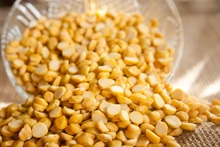
Around 20,830 metric tonnes of biomass, including rice straw, have been used in seven thermal power plants in the NCR so far, with a tender procedure for another 43 lakh metric tonnes currently underway. According to data provided at a session on agricultural stubble management held last week by the Commission for Air Quality Management (CAQM) as part of a discussion on strategies to decrease air pollution in Delhi-NCR.
One technique to reduce stubble burning is to use paddy straw in power plants. CAQM member secretary Arvind Nautiyal said the commission had issued statutory directives to 11 thermal power plants within a 300-kilometer radius of Delhi to mandate the co-firing of biomass with coal by substituting 5 percent to 10% of coal with biomass.
Last September, these directives were released. According to another NTPC presentation, seven of the 11 power facilities in NCR are co-firing coal and biomass. Two of these plants are run by NTPC, which is part of the central government, and the other five are run by private companies. Power plants must make use of as much paddy straw as possible.
According to Nautiyal, around 1.16 million tonnes of agricultural residue are utilized in Punjab using 'ex-situ' stubble management methods such as biomass power plants.
Straw is used for a variety of purposes, including power generation, industrial boiler fuel, composting, and packing. The amount used is a minor percentage of the total amount of straw produced in Punjab, which was 18.74 million tonnes in 2021. Haryana produced approximately 6.8 million tonnes of straw.
In addition to PNG and other cleaner fuels like propane, butane, or LPG, industries in the NCR are allowed to use biomass fuel, according to Nautiyal. According to him, ex-situ stubble management necessitates a mapping of all districts for straw supply and demand from sources.
"It's not a supply issue; it's a logistics one." The straw will not be used in its current state; it must be processed and transformed into briquettes, pellets, or other forms as required by the industry. The key is to store the straw, transport it, treat it, and make it available for long-term usage," he noted.
"The issue is not about machine availability," Nautiyal said of in-situ stubble management, in which crop residue is treated on the field using machinery. They number more than 2 lakh and are fairly numerous.
“The problem is determining how to map the requirements and maximizing their availability throughout harvest season. Despite the fact that the means are available, the reach is limited, and despite the availability of machines, field use is limited. The bio-decomposer, a solution sprayed on stubble to aid decomposition, must be used in conjunction with the machines,” according to Nautiyal.











